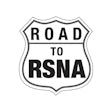Sunday, November 26 | 1:00 p.m.-1:10 p.m. | S4-SSCH02-1 | Room N228
Coordinating lung cancer and mammography screening boosts uptake of the former, a team of researchers has found.
Using data from a study called Coordinate A Lung screening with Mammography (CALM), Kim Sandler, MD, of Vanderbilt University Medical Center in Nashville, TN, and colleagues discovered that targeted outreach to patients and providers resulted in improved lung cancer screening enrollment among women.
Breast cancer screening with mammography is well used, with 70% of eligible women reporting having undergone a mammogram within the past two years, the group noted. But even though the pool of patients eligible for lung cancer screening was expanded in 2021, uptake of this exam remains low. Sandler's team sought to assess whether screening mammography can be used as an opportunity to boost lung cancer screening rates among women.
The investigators conducted a study that included 32,165 women who underwent screening mammography between November 2019 and December 2022 at two academic hospitals. They used electronic health record information to determine whether women were eligible for lung cancer screening according to the U.S. Preventive Services (USPSTF) 2021 guidelines and if so, notified the women of this. Of the total number of study participants who had screening mammography, 1,568 were eligible for lung cancer screening; of these, 1,089 (69%) had not had this screening before.
The researchers found that the intervention proved successful, with the total number of screenings at Site A (a centralized lung screening program in the Southeast) significantly increasing at 12 months with CALM study interventions compared with the number predicted from preintervention data (p = 0.011). CALM interventions also increased screenings at Site B, a hybrid lung cancer screening center, but this boost was not statistically significant, which Sandler and colleagues hypothesized may have been due to operational effects of the COVID-19 pandemic.
"[The CALM] outreach strategies can be customized to different program structures, as represented by the centralized and hybrid programs included in this initiative," the team concluded. "Radiology practices are uniquely positioned to use this intervention to improve enrollment as all patients were seen for both mammography and low-dose CT."


